Related Research Articles

Sir John Morison Gibson was a Canadian politician and the tenth Lieutenant Governor of Ontario.

Abigail Jane Scott Duniway was an American women's rights advocate, newspaper editor and writer, whose efforts were instrumental in gaining voting rights for women in the United States.
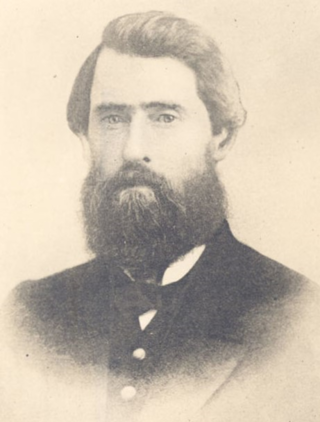
Jason Lee was a Canadian Methodist Episcopalian missionary and pioneer in the Pacific Northwest. He was born on a farm near Stanstead, Quebec.
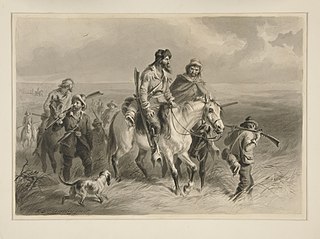
Border ruffians were proslavery raiders who crossed into the Kansas Territory from Missouri during the mid-19th century to help ensure the territory entered the United States as a slave state. Their activities formed a major part of a series of violent civil confrontations known as "Bleeding Kansas", which peaked from 1854 to 1858. Crimes committed by border ruffians included electoral fraud, intimidation, assault, property damage and murder; many border ruffians took pride in their reputation as criminals. After the outbreak of the American Civil War in 1861, many border ruffians fought on the side of the Confederate States of America as irregular bushwhackers.

The National Society of Pershing Rifles is a US military-oriented honor society for college-level students founded in 1894 as a drill unit at the University of Nebraska–Lincoln. It is the oldest continuously operating US college organization dedicated to military drill. Originally named Varsity Rifles, members renamed the organization in honor of their mentor and patron, Lieutenant John J. Pershing, upon his departure from the university in 1895.

California's involvement in the American Civil War included sending gold east to support the war effort, recruiting volunteer combat units to replace regular U.S. Army units sent east, in the area west of the Rocky Mountains, maintaining and building numerous camps and fortifications, suppressing secessionist activity and securing the New Mexico Territory against the Confederacy. The State of California did not send its units east, but many citizens traveled east and joined the Union Army there, some of whom became famous.
The Willamette Cattle Company was formed in 1837 by pioneers in the Willamette Valley of present-day Oregon, United States. The company was formed with the express purpose of purchasing cattle in Mexican California. Nearly 750 head of cattle and 40 horses were purchased in total. Ewing Young led the overland party as they drove these animals north back to the Willamette Valley.
The Oregon Rangers were two 19th century settler militia in the Willamette Valley of the contested Oregon Country. The first was established in response to the Cockstock incident and quickly dissolved. The second was formed in 1846 but only lasted few months.

Willamette University College of Medicine is a former school of medicine that was part of Willamette University. Founded in 1867 as the first medical school in Oregon, the school relocated between Portland and the main university campus in Salem several times. The school was merged with the University of Oregon's medical school in Portland in 1913. That school later became Oregon Health & Science University.
Dr. Elijah White (1806–1879) was a missionary and agent for the United States government in Oregon Country during the mid-19th century. A trained physician from New York State, he first traveled to Oregon as part of the Methodist Mission in the Willamette Valley. He returned to the region after a falling-out with mission leader Jason Lee as the leader of one of the first large wagon trains across the Oregon Trail and as a sub-Indian agent of the federal government. In Oregon he used his authority to regulate affairs between the Natives and settlers, and even between settlers. White left the region in 1845 as a messenger for the Provisional Government of Oregon to the United States Congress, returning in 1850 before leaving again for California in the early 1860s.

Jacob Kamm was a prominent early transportation businessman in Oregon, USA.
The Columbia was a steamboat built at Astoria, Oregon in 1850. It was the first steamboat built in the Oregon Territory, and the first to establish regular service on the lower Columbia and Willamette rivers. This vessel should not be confused with the many other craft with the same or a similar name, including in particular at least four other vessels named Columbia which ran on the Columbia river or its tributaries.
United States Volunteers also known as U.S. Volunteers, U.S. Volunteer Army, or other variations of these, were military volunteers called upon during wartime to assist the United States Army but who were separate from both the Regular Army and the militia.

Sarah Dixon was a wooden sternwheel-driven steamboat operated by the Shaver Transportation Company on the Columbia and lower Willamette rivers from 1892 to 1926. Originally Sarah Dixon was built as a mixed use passenger and freight vessel, and was considered a prestige vessel for the time.

Mountain Rangers was the nickname of an Oregon militia regiment formed during the American Civil War. A mounted unit, the Mountain Rangers were officially Company A, 1st Regiment, 1st Brigade, Oregon State Militia.
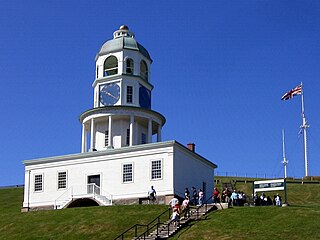
The Halifax Volunteer Battalion (1860–1868) included six companies that were raised in present-day Halifax Regional Municipality. The six companies included the Scottish Rifles, Chebucto Grays, Mayflower Rifles, Halifax Rifles, Irish Volunteers and Dartmouth Rifles which were all raised in the fall of 1859. The upper ranks of the battalion was made up of distinguished people from the community filling the ranks of officers. The battalion served ceremonial functions, raised money for charities as well as defended the city against possible military threat during the Fenian Raids. The present-day The Halifax Rifles (RCAC) descended from the 63rd regiment of the Battalion.
On April 15, 1861, at the start of the American Civil War, U.S. President Abraham Lincoln called for a 75,000-man militia to serve for three months following the bombardment and surrender of Fort Sumter. Some southern states refused to send troops against the neighboring Deep South slave states of South Carolina, Mississippi, Florida, Alabama, Georgia, Louisiana, and Texas. The result was that most states in the Upper South of Virginia, Arkansas, North Carolina, and Tennessee also declared secession from the United States and joined the Confederate States.
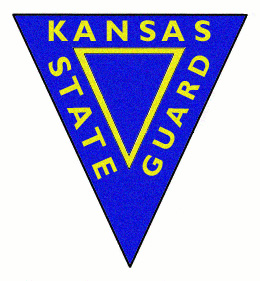
The Kansas State Guard was the official state defense force of the state of Kansas during each of the world wars. The unit was first created during World War I, and was later reactivated during World War II. When the Kansas National Guard was federalized and deployed during each of the world wars, the state of Kansas was forced to raise and maintain its own military force in order to protect against saboteurs, quell riots, and perform other duties which would normally fall to the National Guard. Unlike the National Guard, which could be federalized and deployed abroad, the State Guard was funded and equipped solely by the state and as such was immune to deployment. The Kansas State Guard is authorized under Kansas law. In 2007, the Kansas Legislature considered a bill which would create a modern Kansas State Defense Force. The bill did not pass.
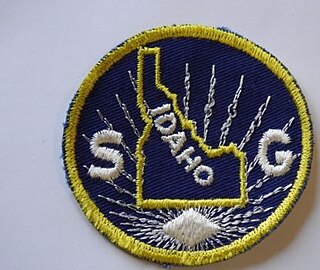
The Idaho State Guard, formerly known as the Idaho Home Guard, or The Idaho Volunteer Reserve (IVR) is the inactive state defense force of Idaho. The Idaho State Guard was created to replace the Idaho National Guard as a stateside homeland security force while the National Guard was in federal service. Their mission was to provide emergency services, including search and rescue missions and guard vital state infrastructure.

The Oregon Mounted Volunteers was a military regiment recruited in the U.S. state of Oregon during the Yakima War. In November 1855, Major Mark Chinn left The Dalles and assembled 6 companies of Mounted Volunteers to turn against the Walla Walla people. Major Chinn and the Mounted Volunteers set base in Fort Henrietta where they built a stockade. Control of the Mounted Volunteers was given to Lieutenant Colonel James Kelly.
References
- 1 2 Horner, John (1919). Oregon: Her History, Her Great Men, Her Literature. p. 116.
- ↑ Gaston, Joseph (1912). . Vol. I. Chicago: The S. J. Clarke Publishing Company.